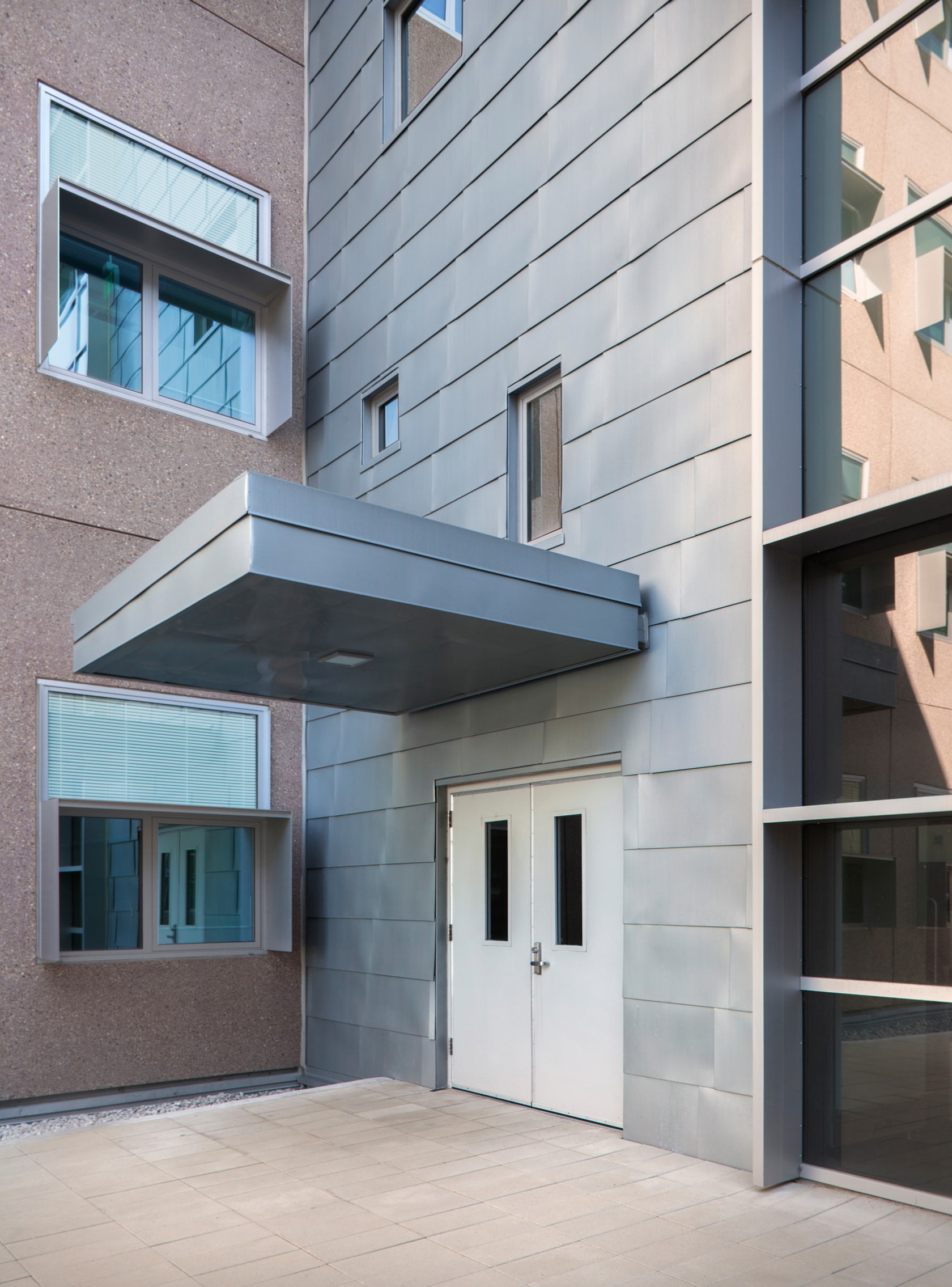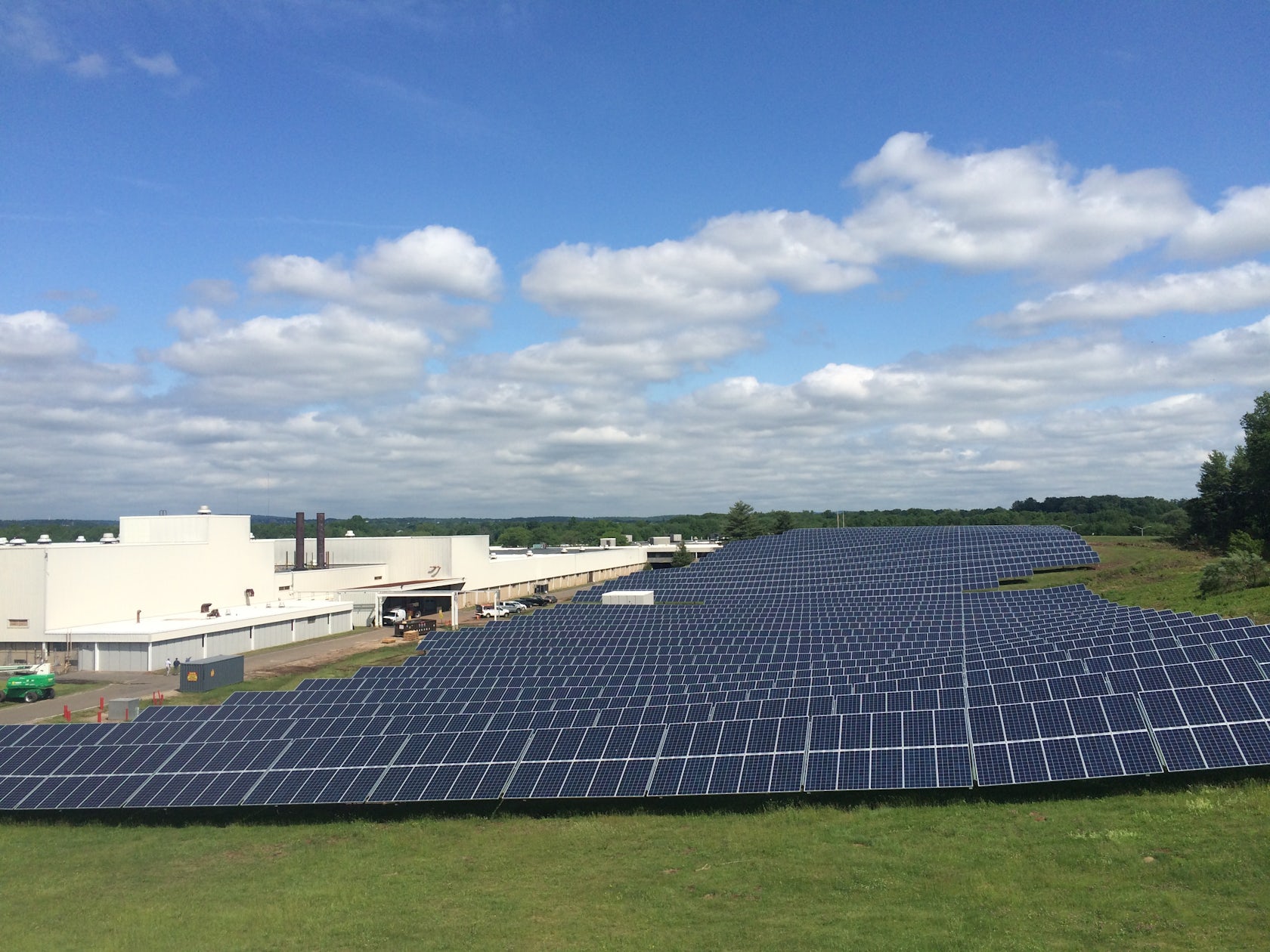Whereas an earlier generation of sustainable architecture advocated sensitizing entire buildings to natural phenomena like solar exposure and prevailing wind patterns, more recently the movement has focused on the details. Environmental Product Declarations, Health Product Declarations and Declare labeling initiatives, in particular, ensure that a building’s many pieces embody the ethics of the whole puzzle. LEED v4 is poised to home in on componentry even more, as this version of the popular certification emphasizes transparency of building products’ environmental and health impacts as well as responsible sourcing of raw materials.
To understand how this trend will play out for architects and product manufacturers in an age of LEED v4, look to the Chesapeake Bay Foundation. The organization is a longtime proponent of sustainable design, and it enthusiastically embraces cutting-edge practice as it appears. Its now-15-year-old Annapolis headquarters, the Phillip Merrill Environmental Center, was the first building to earn LEED Platinum. And its latest project, the Brock Environmental Center in Virginia Beach, Virginia, is one of the first buildings designed to meet the standards of the Living Building Challenge.

EcoFlex Mortise Lock
As befits a Living Building, the Brock facility achieves net zero by way of a variety of efficiency and renewable strategies that work in tandem, such as geothermal heating and cooling and power production by wind turbines. More akin to LEED v4, the Living Building Challenge also requires that building be comprised of environmentally safe materials, and that those products’ sourcing and manufacture are meticulously documented. Origination and supply-chain information is required for each product’s subcomponents.

Approximately 1,000 different products make up the Brock Environmental Center. Aware of the manufacturer’s commitment to Living Building Challenge guidelines, architects SmithGroupJJR and builder Hourigan Construction turned to ASSA ABLOY for a notable number of those products, such as door closers, exit devices and cylindrical locks manufactured by Sargent, McKinney hinges and Norton-made operators. Other ASSA ABLOY group products that contributed to the project’s success were Rockwood, Curries and PEMKO, which supplied protection plates, hollow metal doors and frames and weather stripping, respectively. The latter, in particular, was a key component in ensuring against heat transfer, given the project’s waterfront site, while the Curries doors and frames were instrumental in providing extra insulation.

The Living Building Challenge drove another sustainability visionary, Williams College, to turn the spotlight on building products’ ingredients as it prepared to create The Class of 1966 Environmental Center. The 7,000-square-foot building houses the Center for Environmental Studies and the Zilkha Center for Environmental Initiatives and sensitively expands a 1790s-era frame structure located on the college’s campus in Williamstown, Massachusetts.
The renowned school tapped Black River Design Architects to design the new facility, and as the project team considered responsible sourcing, it also relied on ASSA ABLOY for building-block environmental stewardship. This project specifically deploys Ceco Trio-E hollow metal doors with glass panels for openings that not only met the aesthetic needs of the project, but also performance and sustainability requirements. Additionally, the project incorporated Sargent access control hardware, a Corbin Russwin key system and accessory hardware from ASSA ABLOY’s McKinney, Norton, PEMKO and Rockwood brands.

Trio-E Glazed
These two examples offer a glimpse of product specification in a LEED v4 world. Increasingly, architects and specifiers will depend on manufacturers who have already committed to transparency. Yet it is important to note that the work of sourcing environmentally responsible products does not end at the architectural equivalent of a nutrition label. For the Brock Environmental Center, ASSA ABLOY helped ensure that a variety of components and access points from another manufacturer were modified to meet standards once they arrived on site. And at Williams College, open communication about Ceco Trio-E’s content led to the Living Future Institute’s adding the product to its Declare database of high-performing materials. More generally, ASSA ABLOYs proactive support of projects and the wider sustainability community has a wider sustainability strategy at its root, the targets for which were updated last year.

Solar array at ASSA ABLOY’s U.S. headquarters in Berlin, Connecticut
Nor are manufacturers solely responsible for keeping up this effort. In many cases, transparency does not equal an architect’s best choice for environmental and human health; while a product’s Declare label would certainly expedite decision-making, it remains up to specifiers to not only read the nutrition labels, but also to compare them to one another and determine the best solution. And when manufacturers and architects engage in an ongoing dialogue, the products themselves ultimately become healthier for humans and the planet, in simple terms of supply and demand.
If God is in the detail, then so is Mother Nature: Every design decision and material in a building represents myriad raw resources and ecological processes, and green building reveres the natural systems that make it possible. The informed specifying and responsible manufacture that will surely burgeon under LEED v4, then, is truly a virtuous cycle.




